标签:
django的数据库相关表配置在models.py文件中,数据库的连接相关信息配置在settings.py中
from django.db import models class userinfo(models.Model): name = models.CharField(max_length=30) email = models.EmailField() memo = models.TextField()
可用的字段:
1、models.AutoField 自增列 = int(11) 如果没有的话,默认会生成一个名称为 id 的列,如果要显示的自定义一个自增列,必须将给列设置为主键 primary_key=True。 2、models.CharField 字符串字段 必须 max_length 参数 3、models.BooleanField 布尔类型=tinyint(1) 不能为空,Blank=True 4、models.ComaSeparatedIntegerField 用逗号分割的数字=varchar 继承CharField,所以必须 max_lenght 参数 5、models.DateField 日期类型 date 对于参数,auto_now = True 则每次更新都会更新这个时间;auto_now_add 则只是第一次创建添加,之后的更新不再改变。 6、models.DateTimeField 日期类型 datetime 同DateField的参数 7、models.Decimal 十进制小数类型 = decimal 必须指定整数位max_digits和小数位decimal_places 8、models.EmailField 字符串类型(正则表达式邮箱) =varchar 对字符串进行正则表达式 9、models.FloatField 浮点类型 = double 10、models.IntegerField 整形 11、models.BigIntegerField 长整形 integer_field_ranges = { ‘SmallIntegerField‘: (-32768, 32767), ‘IntegerField‘: (-2147483648, 2147483647), ‘BigIntegerField‘: (-9223372036854775808, 9223372036854775807), ‘PositiveSmallIntegerField‘: (0, 32767), ‘PositiveIntegerField‘: (0, 2147483647), } 12、models.IPAddressField 字符串类型(ip4正则表达式) 13、models.GenericIPAddressField 字符串类型(ip4和ip6是可选的) 参数protocol可以是:both、ipv4、ipv6 验证时,会根据设置报错 14、models.NullBooleanField 允许为空的布尔类型 15、models.PositiveIntegerFiel 正Integer 16、models.PositiveSmallIntegerField 正smallInteger 17、models.SlugField 减号、下划线、字母、数字 18、models.SmallIntegerField 数字 数据库中的字段有:tinyint、smallint、int、bigint 19、models.TextField 字符串=longtext 20、models.TimeField 时间 HH:MM[:ss[.uuuuuu]] 21、models.URLField 字符串,地址正则表达式 22、models.BinaryField 二进制 23、models.ImageField 图片 24、models.FilePathField 文件
字段相关参数:
1、null=True 数据库中字段是否可以为空 2、blank=True django的 Admin 中添加数据时是否可允许空值 3、primary_key = False 主键,对AutoField设置主键后,就会代替原来的自增 id 列 4、auto_now 和 auto_now_add auto_now 自动创建---无论添加或修改,都是当前操作的时间 auto_now_add 自动创建---永远是创建时的时间 5、choices GENDER_CHOICE = ( (u‘M‘, u‘Male‘), (u‘F‘, u‘Female‘), ) gender = models.CharField(max_length=2,choices = GENDER_CHOICE) 6、max_length 7、default 默认值 8、verbose_name Admin中字段的显示名称 9、name|db_column 数据库中的字段名称 10、unique=True 不允许重复 11、db_index = True 数据库索引 12、editable=True 在Admin里是否可编辑 13、error_messages=None 错误提示 14、auto_created=False 自动创建 15、help_text 在Admin中提示帮助信息 16、validators=[] 17、upload-to
数据库连接配置:
DATABASES = { ‘default‘: { #‘ENGINE‘: ‘django.db.backends.‘, # Add ‘postgresql_psycopg2‘, ‘mysql‘, ‘sqlite3‘ or ‘oracle‘. ‘ENGINE‘: ‘django.db.backends.sqlite3‘, #添加数据库引擎;选项[‘postgresql_psycopg2‘, ‘mysql‘, ‘sqlite3‘ or ‘oracle‘]. ‘NAME‘: ‘F:/TestPython/blog/blog/db/data.db‘, # 数据库文件的路径. # The following settings are not used with sqlite3: # 下面的配置不适用于sqlite3: ‘USER‘: ‘‘, # 数据库登陆用户名 ‘PASSWORD‘: ‘‘, # 数据库登陆密码 ‘HOST‘: ‘‘, # Empty for localhost through domain sockets or ‘127.0.0.1‘ for localhost through TCP. # 主机名 ‘PORT‘: ‘‘, # Set to empty string for default. # 端口号 } }
注册app:
在settings里的INSTALLED_APPS里面加上你的app名字
INSTALLED_APPS = [ ‘django.contrib.admin‘, ‘django.contrib.auth‘, ‘django.contrib.contenttypes‘, ‘django.contrib.sessions‘, ‘django.contrib.messages‘, ‘django.contrib.staticfiles‘, ‘app01‘, ]
生成数据库表
python manage.py makemigrations # 生成一个数据库结构migrations里面一个表 python manage.py migrate # 根据migrations里面的表来创建数据库
将app的数据库注册到admin
在app01下面的admin.py写入以下内容:from django.contrib import admin # Register your models here. # 导入app01的数据库模块 from app01 import models # 注册咱们创建的类,通过他来访问 admin.site.register(models.UserInfo)
# 插入数据: UserInfo.objects.create(name=‘rain‘,password=‘123‘,email=‘rain@163.com‘) # 删除数据: UserInfo.objects.filter(name=‘rain‘).delete() # 修改数据: UserInfo.objects.filter(name=‘rain‘).update(name=‘Rain1‘) # 查找数据: UserInfo.objects.filter(name=‘rain‘) UserInfo.objects.all() UserInfo.objects.all()[:10] # 切片操作,获取10个人,不支持负索引,切片可以节约内存 UserInfo.objects.get(name=‘rain‘) #查找所有 models.UserInfo.objects.all() #查找指定条件 models.UserInfo.objects.filter(age=18) #查找第一个 models.UserInfo.objects.filter(age=18).first() #查找所有并且显示出来 user_list_obj = models.UserInfo.objects.all() for line in user_list_obj: print(line.username,line.age)
# 获取个数 models.Tb1.objects.filter(name=‘seven‘).count() # 大于,小于 models.Tb1.objects.filter(id__gt=1) # 获取id大于1的值 models.Tb1.objects.filter(id__lt=10) # 获取id小于10的值 models.Tb1.objects.filter(id__lt=10, id__gt=1) # 获取id大于1 且 小于10的值 # in models.Tb1.objects.filter(id__in=[11, 22, 33]) # 获取id等于11、22、33的数据 models.Tb1.objects.exclude(id__in=[11, 22, 33]) # not in # contains models.Tb1.objects.filter(name__contains="ven") models.Tb1.objects.filter(name__icontains="ven") # icontains大小写不敏感 models.Tb1.objects.exclude(name__icontains="ven") # range models.Tb1.objects.filter(id__range=[1, 2]) # 范围bettwen and # 其他类似 startswith,istartswith, endswith, iendswith, # order by models.Tb1.objects.filter(name=‘seven‘).order_by(‘id‘) # asc models.Tb1.objects.filter(name=‘seven‘).order_by(‘-id‘) # desc # limit 、offset models.Tb1.objects.all()[10:20] # group by from django.db.models import Count, Min, Max, Sum models.Tb1.objects.filter(c1=1).values(‘id‘).annotate(c=Count(‘num‘)) SELECT "app01_tb1"."id", COUNT("app01_tb1"."num") AS "c" FROM "app01_tb1" WHERE "app01_tb1"."c1" = 1 GROUP BY "app01_tb1"."id"
# F 使用查询条件的值 from django.db.models import F models.Tb1.objects.update(num=F(‘num‘)+1) # Q 构建搜索条件 from django.db.models import Q con = Q() q1 = Q() q1.connector = ‘OR‘ q1.children.append((‘id‘, 1)) q1.children.append((‘id‘, 10)) q1.children.append((‘id‘, 9)) q2 = Q() q2.connector = ‘OR‘ q2.children.append((‘c1‘, 1)) q2.children.append((‘c1‘, 10)) q2.children.append((‘c1‘, 9)) con.add(q1, ‘AND‘) con.add(q2, ‘AND‘) models.Tb1.objects.filter(con) from django.db import connection cursor = connection.cursor() cursor.execute("""SELECT * from tb where name = %s""", [‘Lennon‘]) row = cursor.fetchone()
应用场景:
from django.db import models # Create your models here. class UserType(models.Model): caption = models.CharField(max_length=32) # 超级管理员,普通用户,游客,黑河 def __str__(self): return self.caption class UserInfo(models.Model): user = models.CharField(max_length=32) pwd = models.CharField(max_length=32) user_type = models.ForeignKey(‘UserType‘)
#方法一:需要进行两次数据库操作,不推荐 UserInfo.objects.create(user=‘test‘,pwd=‘123‘,user_type=UserType.objects.get(id=1)) #方法二:利用外键关系进行直接插入值,此时user_type代指的就是usertype表 UserInfo.objects.create(user=‘test‘,pwd=‘123‘,user_type_id=1) >>> from app01 import models >>> models.UserInfo.objects.create(user=‘test‘,pwd=‘123‘,user_type=models.UserType.objects.get(id=1)) <UserInfo: UserInfo object> >>> models.UserInfo.objects.create(user=‘asdasdadas‘,pwd=‘123‘,user_type_id=3) <UserInfo: UserInfo object>
 ?
?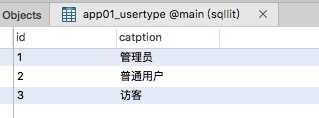 ?
?
1.根据用户,查找用类型
>>> models.UserInfo.objects.filter(user="test")[0].user_type.caption ‘管理员‘ 此时user_type对应的就是usertype的表,所以直接使用.caption就可以拿到数据
2.根据用户类型查找用户
#方法一:先查找出用户类型对应的user_type的id,然后再去userinfo表中查找id对应的用户 >>> role_id = models.UserType.objects.get(caption=‘管理员‘).id >>> role_id 1 >>> models.UserInfo.objects.filter(user_type=role_id).values(‘user‘,‘pwd‘) <QuerySet [{‘pwd‘: ‘123‘, ‘user‘: ‘张三‘}, {‘pwd‘: ‘123‘, ‘user‘: ‘test2‘}, {‘pwd‘: ‘123‘, ‘user‘: ‘test‘}]> #方法二:使用双下划线进行一次连表操作 >>> models.UserInfo.objects.filter(user_type__caption="管理员") <QuerySet [<UserInfo: UserInfo object>, <UserInfo: UserInfo object>, <UserInfo: UserInfo object>]> >>> sql[0].user ‘张三‘ >>> sql[0].pwd ‘123‘ >>> sql[0].user_type.caption ‘管理员‘ >>> sql[0].user_type.id 1 继续封装,同时取用户的所有信息: >>> sql = models.UserInfo.objects.filter(user_type__caption="管理员").values(‘user‘,‘pwd‘,‘user_type__id‘,‘user_type__caption‘) >>> sql <QuerySet [{‘user_type__id‘: 1, ‘pwd‘: ‘123‘, ‘user‘: ‘张三‘, ‘user_type__caption‘: ‘管理员‘}, {‘user_type__id‘: 1, ‘pwd‘: ‘123‘, ‘user‘: ‘test2‘, ‘user_type__caption‘: ‘管理员‘}, {‘user_type__‘pwd‘: ‘123‘, ‘user‘: ‘test‘, ‘user_type__caption‘: ‘管理员‘}]> 打印sql语句: >>> print(sql.query) SELECT "app01_userinfo"."user", "app01_userinfo"."pwd", "app01_userinfo"."user_type_id", "app01_usertype"."caption" FROM "app01_userinfo" INNER JOIN "app01_usertype" ON ("app01_userinfo"."user_type_id" = "app01_usertype"."id") WHERE "app01_usertype"."caption" = 管理员
跨多张表进行操作,如果UserType表中还有外键指向另一张表的主键,怎么查呢?
新的表结构如下:
from django.db import models # Create your models here. class UserType(models.Model): caption = models.CharField(max_length=32) # 超级管理员,普通用户,游客,黑河 s = models.ForeignKey(‘something‘) def __str__(self): return self.caption class UserInfo(models.Model): user = models.CharField(max_length=32) pwd = models.CharField(max_length=32) user_type = models.ForeignKey(‘UserType‘) class something(models.Model): name = models.CharField(max_length=32)
查询:
models.UserInfo.objects.filter(user_type__s__name="一些条件值"
这是跨两张表,跨三张表、四张表都这样
class Girl(models.Model): name = models.CharField(max_length=32) b = models.ManyToManyField(‘Boy‘) class Boy(models.Model): name = models.CharField(max_length=32)
PS:多对多关系需要三张表,两张数据表,一张关系表,但是在django 中如果使用ManyToManyField的话,不需要在指定第三张表,默认django会创建。当然,如果不使用该字段的话,也可以手动指定第三张表,然后使用models.ForeignKey做外键关联
添加数据到关系表:
女孩跟男孩建立关系 正向操作 >>> G = models.Girl.objects.get(id=1) >>> g = models.Girl.objects.get(id=1) >>> girl = models.Girl.objects.get(id=1) >>> boy = models.Boy.objects.get(id=3) >>> girl.name ‘fuzj3‘ >>> boy.name ‘fuzj2‘ #使用对象建立关系 >>> girl.b.add(boy) #此时的b时多对多的字段 >>> bs = models.Boy.objects.all() #获取男孩的所有对象,返回数组 >>> g.b.add(*bs) #批量将关系插入到关系表 #使用主键值建立关系 >>> girl = models.Girl.objects.get(id=3) >>> girl.b.add(3) >>> bs_list = [1,4,5] >>> girl.b.add(*bs_list) 男孩跟女孩建立关系 反向操作 >>> boy = models.Boy.objects.get(id=1) >>> boy <Boy: Boy object> >>> boy.girl_set.add(3)
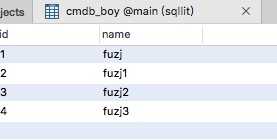 ?
?
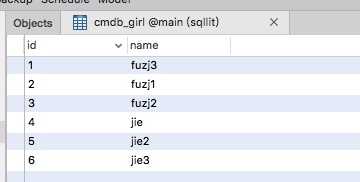 ?
?
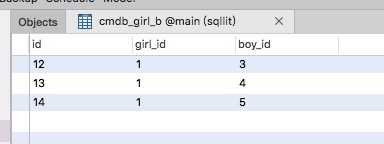 ?
?
删除
remove() 删除
clear() 清空
>>> g1 = models.Girl.objects.get(id=1) #获取一个女孩对象 >>> g1.b.remove(2) #单个删除一个关系 >>> g1.b.remove(*[3,4]) #批量删除多个关系 >>> g1.b.clear() #清空本对象对应的所有关系
查询
支持all() filer()等操作
1.通过女孩查找男孩(正向查找) >>> models.Girl.objects.filter(name=‘fuzj2‘).values(‘id‘,‘name‘,‘b__name‘) <QuerySet [{‘name‘: ‘fuzj2‘, ‘id‘: 3, ‘b__name‘: ‘fuzj‘}, {‘name‘: ‘fuzj2‘, ‘id‘: 3, ‘b__name‘: ‘fuzj2‘}, {‘name‘: ‘fuzj2‘, ‘id‘: 3, ‘b__name‘: ‘fuzj3‘}, {‘name‘: ‘fuzj2‘, ‘id‘: 3, ‘b__name‘: None}]> ‘b__name‘中 b此时代指的关系表,所以b__name 就是跨到了boy表,。此时相当于直接跨了两张表 2. 通过男孩查找女孩(反向查找) >>> models.Boy.objects.filter(name=‘fuzj‘).values(‘id‘,‘name‘,‘girl__name‘) <QuerySet [{‘name‘: ‘fuzj‘, ‘id‘: 1, ‘girl__name‘: ‘fuzj2‘}]> ‘girl__name‘ 中,girl是boy表中隐藏的字段,代指的是和girl的关系表,所以girl__name就跨到了girl表
修改
默认django不支持修改操作,如果实现修改操作,只能是先删除,然后再创建,显然这个效率不是很高。所以,我们可以通过原生的sql语句进行操作
from django.db import connection cursor = connection.cursor() cursor.execute("update tbname set girl_id = ‘3‘ where boy_id = %s",[3])
中间件是一个、一个的管道,如果相对任何所有的通过Django的请求进行管理都需要自定义中间件
中间件可以对进来的请求和出去的请求进行控制
中间件是一类。
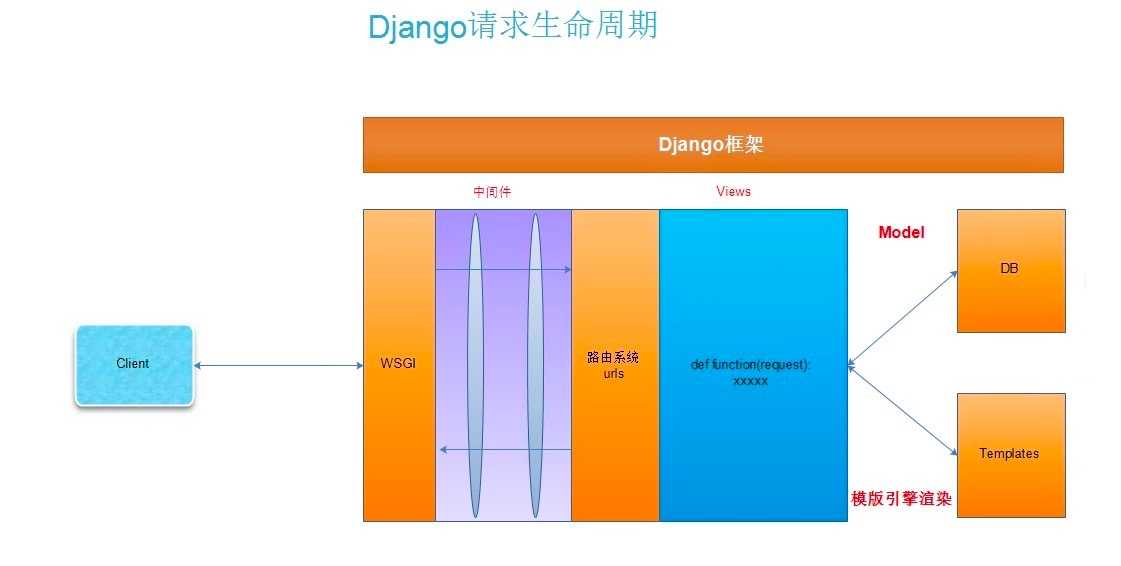 ?
?
由上图可知,中间件是位于wsgi和路由系统中间的环节。用户请求和和回应请求都会经过中间件。
看下面的代码在settings里中间件的类:
MIDDLEWARE_CLASSES = [ ‘django.middleware.security.SecurityMiddleware‘, ‘django.contrib.sessions.middleware.SessionMiddleware‘, ‘django.middleware.common.CommonMiddleware‘, ‘django.middleware.csrf.CsrfViewMiddleware‘, ‘django.contrib.auth.middleware.AuthenticationMiddleware‘, ‘django.contrib.auth.middleware.SessionAuthenticationMiddleware‘, ‘django.contrib.messages.middleware.MessageMiddleware‘, ‘django.middleware.clickjacking.XFrameOptionsMiddleware‘, ]
当有请求过来的时候,默认从上倒下执行!然后在返回的时候从下面在返回回去
中间件中可以定义四个方法,分别是:
以上方法的返回值可以是None和HttpResonse对象,如果是None,则继续按照django定义的规则向下执行,如果是HttpResonse对象,则直接将该对象返回给用户。
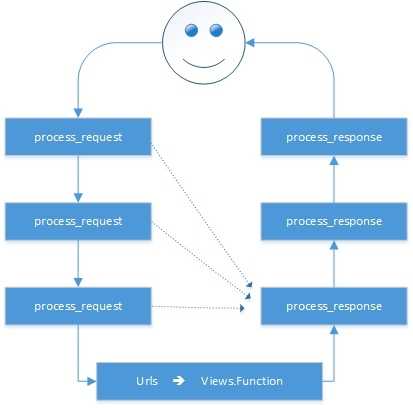 ?
?
在django的的project目录下创建一个middleware目录,并创建一个md.py的脚本,内容如下:
class Testmiddle: def process_request(self,request): print ‘Testmiddle process_request‘ def process_view(self, request, callback, callback_args, callback_kwargs): print ‘Testmiddle process_view‘ def process_exception(self, request, exception): pass def process_response(self, request, response): print ‘Testmiddle process_response‘ return response class Nextmiddle: def process_request(self,request): print ‘Nextmiddle process_request‘ def process_view(self, request, callback, callback_args, callback_kwargs): print ‘Nextmiddle process_view‘ def process_exception(self, request, exception): pass def process_response(self, request, response): print ‘Nextmiddle process_response‘ return response
修改settings.py文件,在MIDDLEWARE_CLASSES中添加我们创建的中间件
MIDDLEWARE_CLASSES = [ ‘django.middleware.security.SecurityMiddleware‘, ‘django.contrib.sessions.middleware.SessionMiddleware‘, ‘django.middleware.common.CommonMiddleware‘, ‘django.middleware.csrf.CsrfViewMiddleware‘, ‘django.contrib.auth.middleware.AuthenticationMiddleware‘, ‘django.contrib.auth.middleware.SessionAuthenticationMiddleware‘, ‘django.contrib.messages.middleware.MessageMiddleware‘, ‘django.middleware.clickjacking.XFrameOptionsMiddleware‘, ‘middleware.middle.Testmiddle‘, ‘middleware.middle.Nextmiddle‘, ]
Testmiddle process_request
Nextmiddle process_request
Testmiddle process_view
Nextmiddle process_view
This app01 Views.index
Nextmiddle process_response
Testmiddle process_response
从输出结果可以看出:
他是先执行Testmiddle 的request 方法又执行了Nextmiddle的 process_request方法, 然后在执行Testmiddle的view方法,Nextmiddle的view方法
注意:django版本1.10以后,会报如下错误:
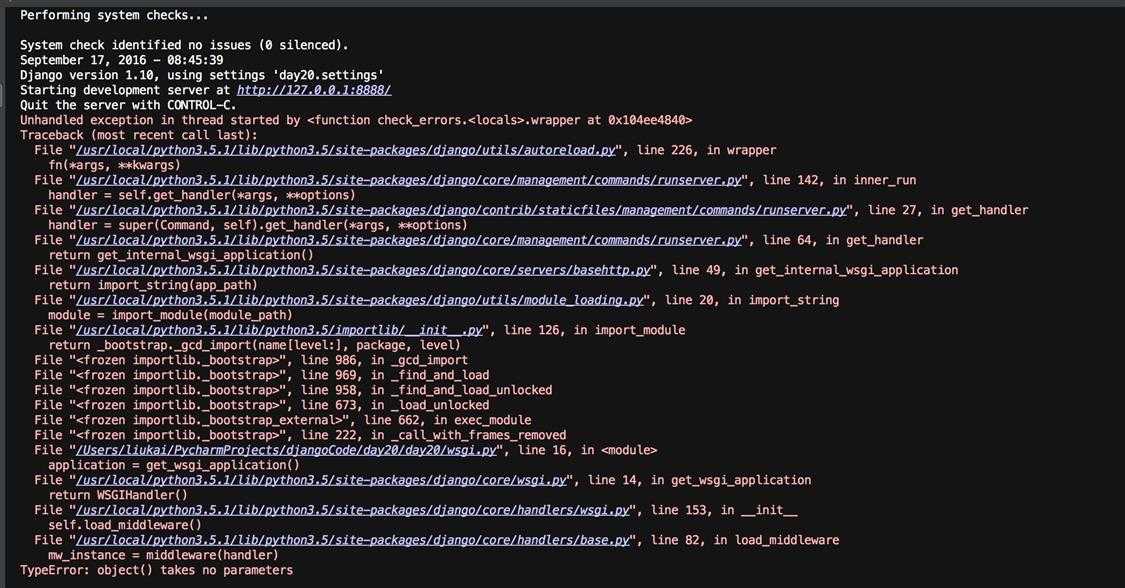 ?
?
解决如下:
from django.utils.deprecation import MiddlewareMixin class Testmiddle(MiddlewareMixin): def process_request(self,request): print ‘Testmiddle process_request‘ def process_view(self, request, callback, callback_args, callback_kwargs): print ‘Testmiddle process_view‘ def process_exception(self, request, exception): pass def process_response(self, request, response): print ‘Testmiddle process_response‘ return response class Nextmiddle(MiddlewareMixin): def process_request(self,request): print ‘Nextmiddle process_request‘ def process_view(self, request, callback, callback_args, callback_kwargs): print ‘Nextmiddle process_view‘ def process_exception(self, request, exception): pass def process_response(self, request, response): print ‘Nextmiddle process_response‘ return response
注意:
* 老版本中在中间件中如果某个中间件类的方法返回的不是none,则后面的中间件不会再处理请求,也不会到达路由系统,而是直接到第一个process_response,开始所有的process_response处理
* 新版本中在中间件中如果某个中间件类的方法返回的不是none,则后面的中间件不会再处理请求,也不会到达路由系统,而是直接到最后一个process_response处理,然后返回给客户端
标签:
原文地址:http://www.cnblogs.com/pycode/p/db-middleware.html